Question from Dylan T.:
Dear Geek,
Did Charles Moncky really invent the Monkey wrench?
Thanks,
Dylan

Category: Invention Geek Answers
Question from Valerie H.:
Is it true Yankee Stadium was built with special cement Edison himself had invented?
Continue reading “Invention Geek – Yankee Stadium and Thomas Edison?”
Question from Carly M.:
Dear Geek,
This may seem silly, but did Isaac Newton really invent the cat flap door?
Thanks,
Carly
Question from Fabi R.:
Dear Geek,
I stumbled onto patent #1120656 the other day, and it looks like the pushpin (thumbtack) we buy & use today. Do you know if this was the original pushpin? And could you, anyway, tell me if not which one was and how did they came up with the idea?
Thanks, Geek!
Sincerely,
Fabi
Question from Joyce P.:
I saw a motorized pogo stick on Auction Kings. What can you tell me about this crazy invention?
Hello Joyce,
The owner of a tool and die shop in Elwood, Indiana, Gordon Spitzmesser, invented this pogo stick which was basically a small gasoline motor by combining the barrel of a grease gun with a lawnmower piston. Bouncing pushed the piston in the cylinder, compressing the file and firing a sparkplug which would cause the stick to launch into the air. The average bounce was about 30 inches high.
Spitzmesser applied for a patent on January 10, 1958. He was issued U.S Patent 2,929,459 on March 22, 1960 for a Combustible Gas Powered Pogo Stick.
Chance Manufacturing, an amusement ride manufacturer, purchased the patent rights from Spitzmesser. Chance sold the invention in the 1960’s as the “Hop Rod.” Ultimately, the toy was banned after too many people were injured in accidents involving the hopping stick. Today, there are very few left in existence and I am certainly not rushing to try one out.
Question from Gary L.:
I think the drive-through is one of the best inventions ever. I love that I can get food and coffee without ever having to get out of my car. Who should I thank for this wonderful convenience?
Hello Gary,
The first drive-up window was actually not at a fast food restaurant. The first window was added to the City Center Bank in Kansas City, Missouri. Bank president. R. Crosby Kemper opened this window in 1928.
The idea of a drive-through window was not translated to a restaurant until twenty years later. In-n-Out Burger claims that they built the first drive-through restaurant in 1948. The restaurant, in Baldwin Park, CA had an intercom system so customers could order without ever getting out of their cars.
Today, drive-through windows can be found everywhere from restaurants, coffee shops and banks to drug stores, funeral homes and wedding chapels. Next time, you enjoy the convenience of the drive-through you should thank Harry and Esther Snyder, the founders of In-n-Out Burger.
Question from Carrie:
I was listening to Jimmy Buffet’s song “This Hotel Room” and one of the lines is- “Feel alright, feel alright. Magic Fingers makes you feel alright.” I remember hearing that Magic Fingers was popular in motels a while back. Who invented it?
Hey Carrie,
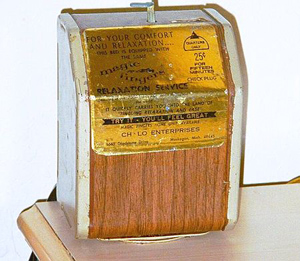 John Houghtaling invented Magic Fingers in his New Jersey Home in 1958. He received patent 3,035,572 for a vibrator on May 22, 1962.
John Houghtaling invented Magic Fingers in his New Jersey Home in 1958. He received patent 3,035,572 for a vibrator on May 22, 1962.
Magic Fingers was a vibrating bed relaxation system found in many motels during the 1960s and ’70s. It was installed onto millions of beds and in exchange for a quarter, the bed would provide 15 minutes of vibrating relaxation. The device was marked by a label reading; “Magic Fingers quickly carries you into the land of tingling relaxation and ease.”
Houghtaling was a salesman for a company that sold vibrating beds. The bed and the vibrating motor were sold together as a single item. While fixing a broken unit, Houghtaling realized that the vibrating motor was the most essential element and not the bed itself. He wanted to design a vibrating unit that could be attached to the box spring of any bed. He tested about 300 motors before finding the right combination that was light in weight and made the bed vibrate at a comfortable frequency.
At the height of its’ popularity, Magic Fingers collected about $6,000 to $7,000 a month in quarters.
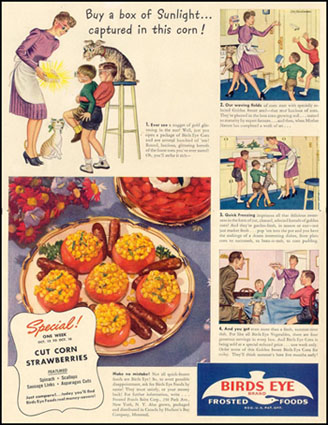 As a young adult, struggling to financially support himself through Amherst College by catching and selling frogs to the Bronx Zoo, Clarence Birdseye would later come into a great fortune within the food industry and be named ‘The Father of Frozen Food.’
As a young adult, struggling to financially support himself through Amherst College by catching and selling frogs to the Bronx Zoo, Clarence Birdseye would later come into a great fortune within the food industry and be named ‘The Father of Frozen Food.’
In 1912, Birdseye went on a fur-trading expedition to the Canadian province of Labrador when he realized that there was a fortune to be made in breeding and trapping foxes. He did just that for the next five years. He also did a fair amount of fur re-sale. Food supply in secluded parts of Labrador were little, so he ate things such as blackbirds, whale, lynx, lizards, starlings, alligator, beaver tail and skunk.
Birdseye was taught how to ice fish under thick ice by the native Inuit people. Once caught, he realized the fish froze almost instantly and when thawed, tasted fresh. Birdseye saw the preservative effects of extremely cold temperatures on fresh fish. He realized that this ‘fast freezing’ method could develop into a great way for people to have access to fresh food all year-round. Continue reading “The Father of Frozen Food”
Question from Felix:
Hey Invention Geek,
Is there a patent for the MRI machine? If so, who holds the patent?
Thanks for your question, Felix!
The short answer is: yes, there are, in fact, a few of patents associated with the development of the modern MRI.
The slightly longer answer includes stories of betrayal, intrigue, and full page ads in the New York Times.
First of all, Raymond Damadian is widely credited with the initial discovery of Magnetic Resonance Imaging (MRI).
After exposing tissue samples to nuclear magnetic resonance, Damadian observed a difference between tissue in a cancerous tumor and healthy tissue. He published an article in 1971 in the journal, Science, about his findings. In collaboration with other doctors, the first MRI for a full body scan was built in 1977. Damadian named it the “Indomitable,” because of the seven years of complex work needed to finish the project.
He obtained US patent 3,789,832 for the MRI machine, called an “apparatus and method for detecting cancer in tissue,” in February of 1974 and was eventually inducted into the National Inventor’s Hall of Fame for this achievement in 1989.
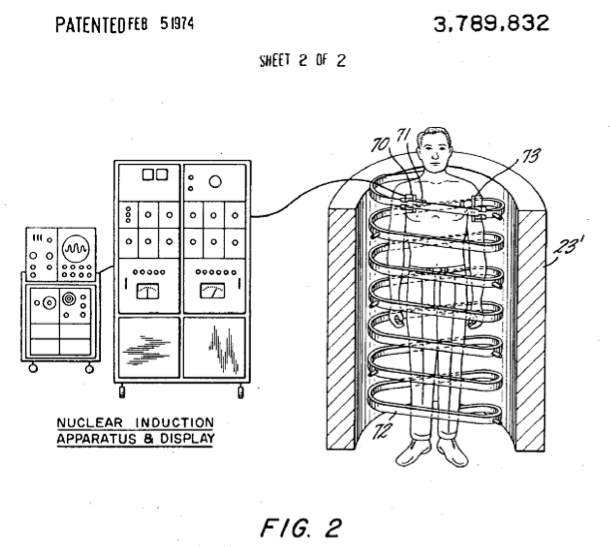
An image from Damadian's MRI Patent, issued Feb 5, 1974.
Now, while credit for the original MRI scanning machine goes to Dr. Damadian, credit for the development and refinement of magnetic imaging — which is what helps the machine do what it does as well as it does it — belongs mainly to chemist Dr. Paul Lauterbur. Damadian’s original patent had included the use of nuclear magnetic resonance (NMR) for diagnostic imaging, as it ahd been discovered a few decades earlier, but it turned out to be fairly inaccurate and was deemed unsuitable for diagnostic purposes.
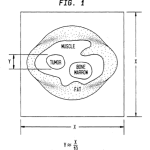
Lauterbur's 1992 patent on NMR magnetic imaging.
Lauterbur’s work developing the use of NMR for magnetic imaging was crucial in the ultimate success of the MRI Machine as a diagnostic tool. The doctor worked for decades to improve the accuracy and reliability of the imaging process. In 1992, he was awarded patent 5081992 for a “method for calculating localized magnetic resonance spectra.”
In 2003, Dr. Lauterbur and British chemist Peter Mansfield were jointly awarded the Nobel Prize for their work in the field.
But Dr. Damadian was not to be forgotten. After Lauterbur was awarded the Nobel prize in 2003, Damadian (or friends, as some stories have it) took out full page ads in the most popular newsparers denouncing Lauterbur’s win and demanding reconsideration. While there is no appeals or recall process for a Nobel Prize, Damadian did receive additional recognition in 2004 when he was awarded a Bower Award for scientific excellence by the Franklin Institute.
Dr. Lauterbur was finally given a well-earned place in the National Inventor’s Hall of Fame in 2007.
Both men contributed greatly to the advancement of modern medical diagnostic technology as we know it.
Have Your Own Question for the Invention Geek?
Ask away! If we choose to publish your answer online, you’ll get a free patent mug. Submit your question now!
Question from Marshall:
Who invented the frisbee? Wasn’t there something about college campuses?
Hey Marshall,
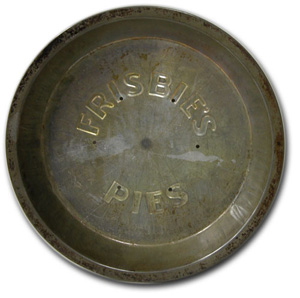 Early history of the frisbee is somewhat unclear, with many people claiming that they were the first to throw a pie pan. However, we do know the first people who turned the leftover pie trash into a plastic toy.
Early history of the frisbee is somewhat unclear, with many people claiming that they were the first to throw a pie pan. However, we do know the first people who turned the leftover pie trash into a plastic toy.
The beginning of the toy frisbee includes Frisbie Baking Company in Connecticut and college students. The Frisbie Baking Company made many pies and after consumption, students from surrounding colleges would collect and toss the empty tin containers through the air.
Several colleges wanted to be recognized as “he who was first to fling.” One story included a claim by Yale College that one of their students, Elihu Frisbie, was the first person to throw tin trays after snagging a collection tray of pies from the chapel. The student was the creator of the Frisbie fling.
Many people believe that this story is untrue because the pie pans were embossed with ‘Frisbie Pies’, which is where the name for the toy came from, not a student ‘Frisbie flinging’ a plate.
Walter Morrison and Warren Franscioni invented a version of the first plastic frisbee in 1948. This version flew much further than the pie pans. After separating from his partner, Morrison continued to work on a basic plastic model for the modern frisbee and called it Pluto Platter. He received design patent 183,626 for a flying toy on September 30, 1958. Morrison sold the rights in 1957 to toy manufacturing company; Wham-O.
